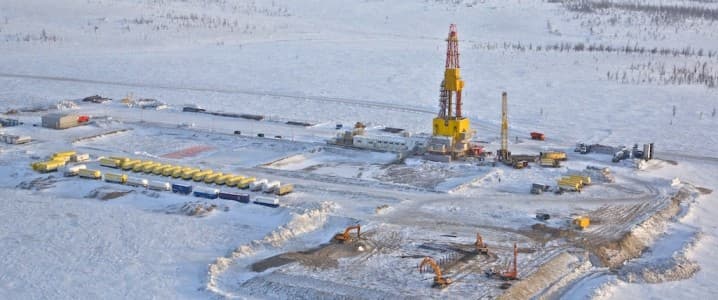Business
Oil Prices Stabilize Amid Peace Talks, Limited Supply Forecasts

Oil prices have remained relatively stable recently, with Brent crude fluctuating between $65.01 and $67.06 per barrel in mid-August. This stability follows renewed discussions about a potential peace agreement between Russia and Ukraine, which could have significant implications for global oil supply and pricing. Meetings involving U.S. President Donald Trump, Russian President Vladimir Putin, and Ukrainian President Volodymyr Zelenskyy have influenced market sentiments, as traders respond to the prospect of eased sanctions on Russian energy exports.
On August 13, Brent crude fell to an intra-day low of $65.01 per barrel but rebounded to $67.06 per barrel by August 15. The dynamics affecting prices include ongoing negotiations and the possibility of U.S. security guarantees for Ukraine, as noted by Zelenskyy, who described his discussions with Trump as “very good.” Dennis Kissler of BOK Financial highlighted that the chances of a peace deal are increasing, which could lead to a surplus in global oil supplies as sanctions on Russia ease.
As negotiations continue, the U.S. is experiencing a seasonal decline in oil demand, compounded by upcoming refinery maintenance. The Energy Information Administration (EIA) reported a six-week increase in crude inventories at the Cushing hub, which now stands at 23.1 million barrels. While this figure is significantly below the five-year average of 35.1 million barrels, it reflects a trend that has pressured West Texas Intermediate (WTI) prices. The spread between Brent and WTI has widened, growing from $2.24 per barrel in late June to $3.87 per barrel by August 19.
Hurricane Season and Market Impact
The 2025 Atlantic hurricane season has seen its first significant storm reaching Category 5 status on August 16. Fortunately, its trajectory has moved northeast, steering it away from critical oil and gas infrastructure along the U.S. East Coast. While the season has been relatively quiet, the National Oceanic and Atmospheric Administration (NOAA) anticipates an active period ahead, adjusting its earlier forecast to predict 5-9 hurricanes, with 3-5 classified as major storms.
Despite the potential for reduced oil prices if a peace agreement is reached, analysts at Standard Chartered express skepticism about the return of Russian energy commodities to European markets. The bank’s assessment indicates that while sanctions’ removal could allow Western service companies back into Russia, the country’s oil production is not sustainable enough to significantly increase supply. In the first half of 2025, Russia’s oil output averaged 9.01 million barrels per day, which is approximately 610,000 barrels per day less than the annual average in 2021, prior to the invasion of Ukraine.
Moreover, lifting the oil price cap on Russian crude might discourage major buyers like India and China from purchasing discounted oil, which has escalated from $2.31 billion in imports four years ago to an estimated $52.2 billion in 2024. Analysts also suggest that Europe is unlikely to rely on Russian oil and gas again, as it seeks to avoid becoming dependent on Putin.
Gas Market Dynamics
In the gas sector, Standard Chartered sees limited opportunities for Russian pipeline gas to re-enter European markets. The potential return of liquefied natural gas (LNG) cargoes, previously sanctioned, poses risks to market stability. The Dutch Title Transfer Facility (TTF) price for September delivery fell to a 15-month low of EUR 30.30 per megawatt-hour on August 18, settling at EUR 32.21 per megawatt-hour shortly thereafter.
Gas injections across Europe have slowed compared to the five-year average, with data from Gas Infrastructure Europe indicating a weekly decrease of 2.30 billion cubic meters, bringing total gas storage to 85.99 billion cubic meters. This figure represents 74% of the technical maximum fill capacity but remains 8.11 billion cubic meters below the five-year average. The refill rate has lagged nearly 8% behind historical averages, further complicating the continent’s energy outlook.
In summary, while ongoing peace talks between Russia and Ukraine may hint at a shift in the energy landscape, analysts caution against expecting a swift return of Russian oil and gas to European markets. The current dynamics reflect a complex interplay of geopolitical negotiations, seasonal demand fluctuations, and market conditions that will continue to evolve in the coming months.
-

 Science3 months ago
Science3 months agoToyoake City Proposes Daily Two-Hour Smartphone Use Limit
-

 Top Stories3 months ago
Top Stories3 months agoPedestrian Fatally Injured in Esquimalt Collision on August 14
-

 Health3 months ago
Health3 months agoB.C. Review Reveals Urgent Need for Rare-Disease Drug Reforms
-

 Technology3 months ago
Technology3 months agoDark Adventure Game “Bye Sweet Carole” Set for October Release
-

 World3 months ago
World3 months agoJimmy Lai’s Defense Challenges Charges Under National Security Law
-

 Lifestyle3 months ago
Lifestyle3 months agoVictoria’s Pop-Up Shop Shines Light on B.C.’s Wolf Cull
-

 Technology3 months ago
Technology3 months agoKonami Revives Iconic Metal Gear Solid Delta Ahead of Release
-

 Technology3 months ago
Technology3 months agoApple Expands Self-Service Repair Program to Canada
-

 Technology3 months ago
Technology3 months agoSnapmaker U1 Color 3D Printer Redefines Speed and Sustainability
-

 Technology3 months ago
Technology3 months agoAION Folding Knife: Redefining EDC Design with Premium Materials
-

 Business3 months ago
Business3 months agoGordon Murray Automotive Unveils S1 LM and Le Mans GTR at Monterey
-

 Technology3 months ago
Technology3 months agoSolve Today’s Wordle Challenge: Hints and Answer for August 19









